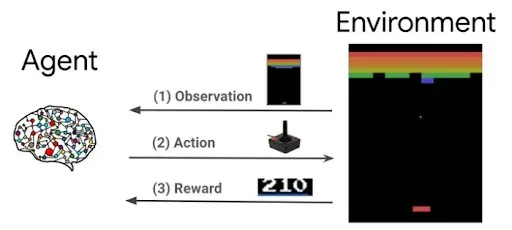Are you new to the concept of machine learning and curious to hear more about the potential of this technology? You’ve come to the right place!
According to a 2020 report by Refinitiv, 40% of businesses are expecting to invest more in machine learning due to the Covid-19 pandemic. This means that machine learning models are becoming increasingly popular as businesses strive to become more data-driven.
However, machine learning can be a complicated concept for beginners to grasp.
In this article, we’ll provide an introductory overview of machine learning models. We’ll cover what a machine learning model is, the different types of machine learning models, and the best model for machine learning. Here are some of the topics we’ll discuss:
- What is a machine learning model?
- What are the different types of machine learning models?
- What is the best model for machine learning?
- How do you choose the right machine learning model?
- Summary
Read on to get a quick introduction to machine learning models!
1. What is a machine learning model?
A machine learning model is a program used to make predictions and decisions based on data in a given dataset.
A machine learning model is created through the process of training using a specific set of data. The trained machine learning models can then be used for predicting outcomes based on the training dataset given to them.
For example, machine learning models can be used to predict customer behavior in retail, analyze sentiment in customer reviews, or detect objects in images.
These models are typically created through code by data scientists, data analysts, and programmers using machine learning programming languages.
2. What are the different types of machine learning models?
Machine learning models can come in various forms based on their requirements and machine learning algorithms.
In general, machine learning models can be separated into four main types:
- supervised
- unsupervised
- semi-supervised
- reinforcement learning
Let’s look at each one in more detail now.
What is supervised machine learning?
Supervised machine learning is when a model is trained on labeled data that contains both the input and output.
In other words, the training data provided to the model has both the inputs (features) and outputs (labels) so that it can learn how to map the inputs to corresponding outputs.
For example, if you wanted to create a model that can predict the temperature of a city based on historical data, the labeled training data set would include the inputs (date, time) and outputs (temperature).
Supervised learning is typically used for classification tasks such as image recognition or text analysis.
Some common supervised machine learning models include:
- Linear regression: Linear regression attempts to fit data points on a straight line to identify relationships between the variable of interest and inputs.
- Logistic regression: Logistic regression is used for classification tasks and attempts to fit data points into two distinct groups.
- K-nearest neighbors: K-nearest neighbors (KNN) is an algorithm that classifies data points based on the distance to their nearest data points.
- Decision trees: Decision trees are used for both regression and classification tasks. It uses a set of rules to create decisions based on the data it’s given.
- Support vector machines: Support vector machines (SVMs) are used for classification tasks by estimating the best boundary (hyperplane) between data points into two classes.
- Naïve Bayes: Naïve Bayes uses Bayes’ theorem for classification tasks and attempts to predict the class of an unseen data point based on probability.
In my experience as a data analyst, I’ve had to use linear regression and k-nearest neighbors most frequently, since both are versatile and easy to implement using common Python libraries.
If you’re thinking of picking some supervised machine learning models to learn, I would recommend starting with those two options first.
What is unsupervised machine learning?
Unsupervised machine learning is when a model is trained on unlabeled data. In this case, the training data only provides the inputs (features) and no outputs (labels).
For example, to group customers based on their purchasing habits, the unlabeled training data set would include only the inputs (product purchases).
Unsupervised learning is used for clustering tasks such as customer segmentation or grouping similar images.
Some common unsupervised machine learning models include:
- K-means clustering: K-means is an algorithm that groups similar data points together into clusters by iteratively moving them to the center of each cluster.
- Hierarchical clustering: Hierarchical clustering creates an order of clusters by repeatedly splitting and merging data points based on their similarity.
What is semi-supervised machine learning?
Semi-supervised machine learning is a hybrid of supervised and unsupervised learning. Labeled and unlabeled data is used to train the models.
Some common semi-supervised machine learning models include:
- Self-training: Self-training is training a model on labeled data followed by using it to label new unlabeled data.
- Generative Adversarial Networks (GANs): GANs are neural networks that can generate new information based on existing data. They use both labeled and unlabeled data.
Applications of semi-supervised machine learning are less commonly used by data scientists in daily tasks. However, they are commonly integrated into generative artificial intelligence (AI) products.
For example, ChatGPT from OpenAI is also made from a GAN model. Through such models, we have seen a rise in generative AI applications in recent years. From creating stories to producing original art pieces, the potential for such models is vast!
What is reinforcement machine learning?
Reinforcement machine learning (RL) is an area of AI that puts an agent in an environment to learn how to maximize their rewards through trial and error.

Source: Tensorflow
When an agent receives a reward for performing well, it will be reinforced, and when an incorrect decision is made, a penalty is given.
Some common reinforcement learning models include:
- Q-learning: Q-learning is an algorithm that uses a reward function to learn the best decisions for an agent in a given environment.
- Deep Reinforcement Learning (DRL): DRL combines deep learning and reinforcement learning algorithms, allowing agents to perform more complicated tasks.
3. What is the best model for machine learning?
The best model for machine learning depends on the type of task you’re trying to solve and the data available.
Generally speaking, supervised models are more commonly used than unsupervised or reinforcement learning, as they can be trained with labeled data.
Therefore, the best models to use for machine learning are supervised models such as:
Each model has its strengths and weaknesses, so you should evaluate your data and the task given to determine which model suits your use case best.
In addition, if you’re using large datasets or complex tasks, deep learning models (such as convolutional neural networks or recurrent neural networks) may be your best choice.
These models are able to learn from large and complex datasets and can achieve high accuracy on tasks that supervised models cannot.
4. How do you choose the right machine learning model?
Selecting the right machine learning model is essential in producing a meaningful analysis and an output that is accurate and helpful.
Factors to consider when selecting a machine learning model
1. The type of problem
The most crucial determining factor when selecting an appropriate machine learning model is the type of problem you’re trying to solve.
Are you dealing with a classification? Or are you trying to find a correlation between two factors?
For classification problems, you can use k-means clustering, k-nearest neighbors, decision trees, and support vector machines. For correlation problems, you can use linear regression.
2. Data type
The type of data you are using to train your model will determine which approach is best suited for the task.
For example, if you have textual data, a supervised model such as Support Vector Machines (SVMs) may be suitable. If your data is more complex and multidimensional, then a deep learning model might be better suited.
3. Dataset size and complexity
The size of your dataset also influences the type of machine learning model that can be used. If your dataset size is large, then a deep reinforcement learning model may be more suitable.
On the other hand, if your dataset size is small, simpler supervised or unsupervised models such as K-means clustering or Naive Bayes may be better suited for the task.
For complex datasets that have incomplete data, semi-supervised models can be used to impute any missing information.
4. Infrastructure and computational resources
The computational resources available to you will also influence which model is the right fit for your task.
For computationally intensive tasks, such as deep learning models, powerful graphics processing units (GPUs) may be required to process the data successfully and quickly.
If GPU resources are unavailable, simpler supervised or unsupervised models may be better suited.
Ultimately, selecting the right machine learning model is about understanding the problem you are trying to solve and weighing up all the different factors that come into play.
5. Summary
In this article, we’ve talked about all the basics of machine learning models. Here are some key takeaway points to remember:
- A machine learning model is a program used to make predictions and decisions based on training data.
- Machine learning models can be divided into supervised, unsupervised, semi-supervised, and reinforcement learning models.
- Supervised machine learning models are the best models for their simple and flexible applications across many business problems.
- Choosing the right machine learning model depends on the type of problem you are trying to solve, the data type and size of your dataset, and the resources available for computation.
Exploring the world of machine learning for the first time can be daunting, especially when it is highly based on applied statistics and mathematics. Going down the path of learning about machine learning models without help can leave you frustrated really quickly.
However, we’re here to help!
CareerFoundry’s Machine Learning with Python course is designed to ease you into this exciting area of data analytics. Possible as a standalone course as well as a specialization within our full Data Analytics Program, you’ll learn and apply machine learning skills and develop the experience needed to stand out from the crowd.
If you’d like to get a taste for data analytics in general, why not try out our free, 5-day data short course? It’ll give you a general overview of what to expect when getting into this exciting field.
For further explanations on other data analytics topics, you might like these articles, too:
